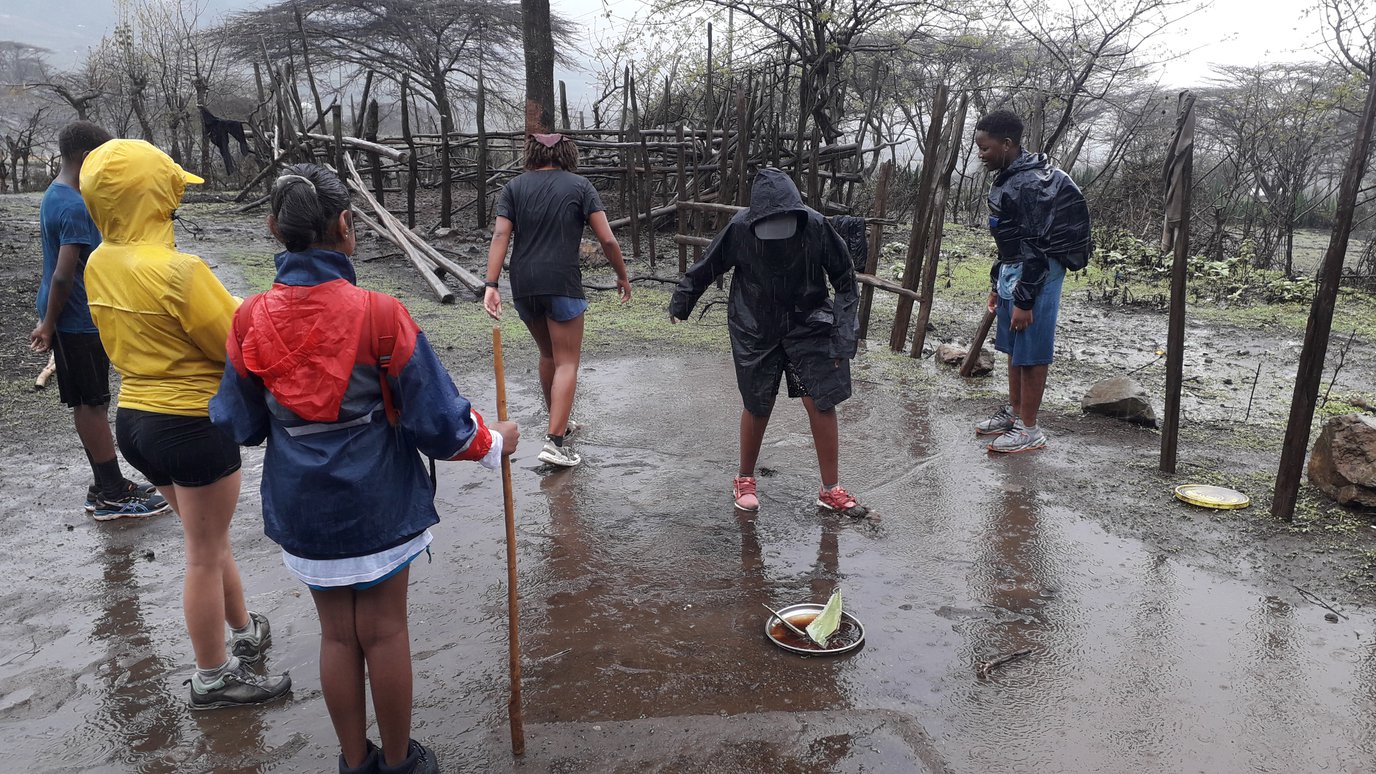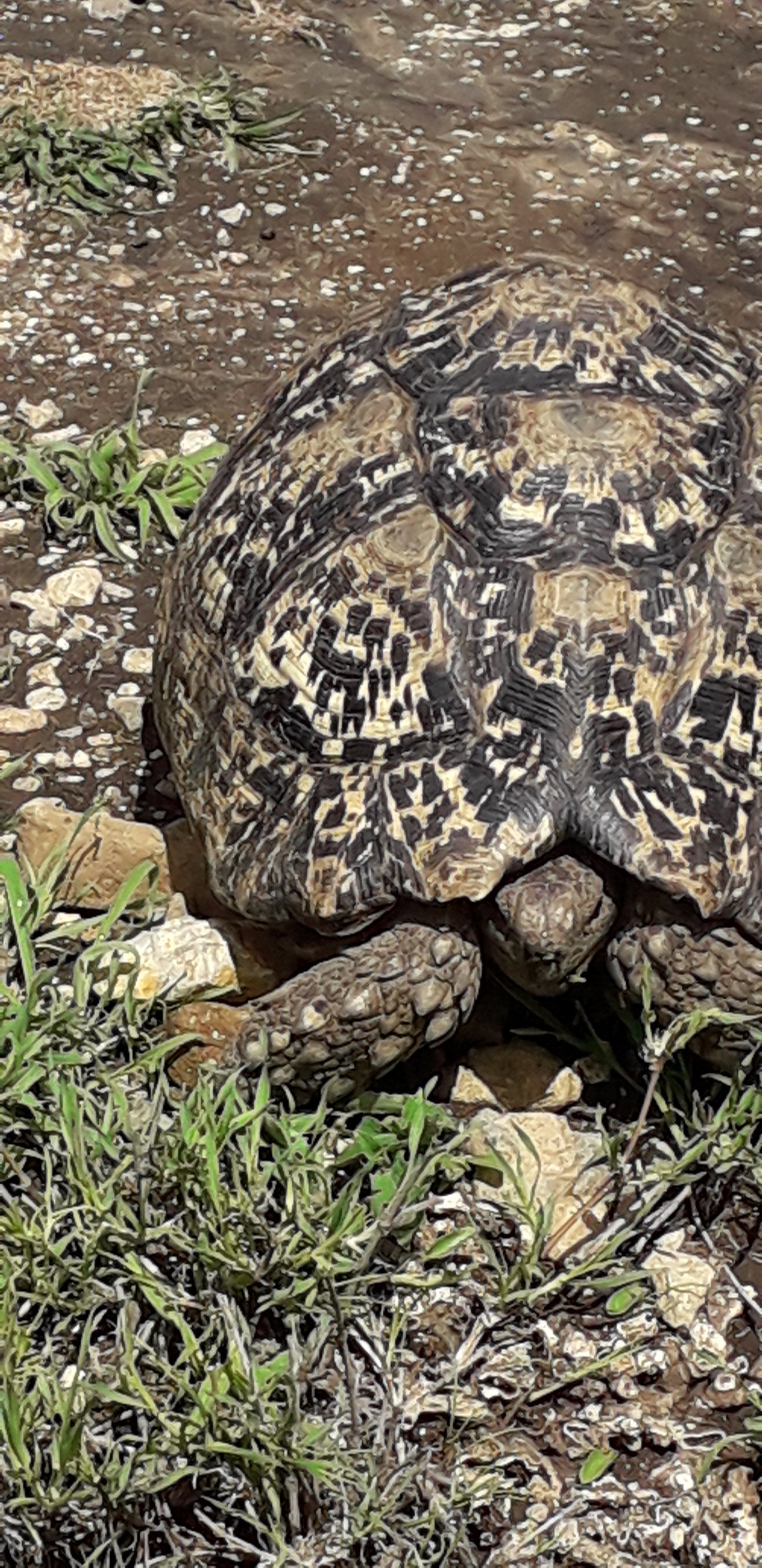
Year 8 Trip to Mukuru Eco-Tented Camp: A Journey into Nature and Resilience

21st November 2023

There was an element of trepidation as the date for our trip to Mukuru Eco-tented camp approached. This was not fuelled by the anticipated 15km hike to the summit of Goat Hill and back, nor was it owing to the fact students would have limited use of their precious, electronic devices and the thought that they would have to communicate with each other during meal times rather than stare at the endless scrolling of screens in various social media platforms and video games. No, the trepidation came from that most British of preoccupations: the weather!
For the past two weeks or so, the expected rainy season had come into full effect and was making up for lost time in comparison with the moderately dry previous two years here in northern Tanzania. Pushed along with a little help from El Niño, the daily weather had been more than a little inclement. Rigorous testing of the Dragon store tents had taken place the previous week in moderate sunshine instilling the hope that all would proceed smoothly once our charges had descended on Mukuru and sprung into action military style to set up base camp.

Monday morning came along with the usual fluster and bluster of ticking off the checklist of essentials: first aid kit, check, sixty litres of drinking water, check, fully equipped tents and mattresses, check, nineteen eager students heavily laden with bags and enough snacks to supply a small army for a week, check.
Then, like a vision, Ms. Diana appeared to tell us that Mukuru had just phoned to inform us that the students would be sleeping in dorms owing to the recent storms and layers of mud that had been deposited in the camping area. The risk of being swept away by a forest flood was sufficient cause to elevate us to the safety of the hill. The resultant high five between myself and Ms. Harrison, who accompanied us on the trip, set everything up nicely for the short journey to the northern outreaches of Arusha National Park.
The camp is on the road to the border with Kenya and sits some seventy kilometres from Namanga; the landscape had changed considerably since my last visit two years ago when I had been there with the then Yr8 still during the dry season. The barren, dry, wheat coloured earth had yielded to the deluge and the russet, rocky outcrops were now verdant and viridian. The landscape had put me in mind of Zola’s La Terre (The Earth) and Vidas Secas (Dry Lives) by Graciliano Ramos. It had seemed a harsh and unforgiving environment home only to the hardiest. The rain and fresh vegetation brought a resurgence in the avian life and the chirping, swooping, busy-busy of the birds in the branches and boughs brought to life the new landscape.

We were met by the manager of the camp, Jacobo, who quickly had the students installed in the dorms while Ms. Harrison and I were led along the path to where the canvas tents on platforms were located. Jacobo cheerily said that we could ‘ set up our tents over there’, pointing to a plot of hard looking ground with a few rocks and stones sticking out. The collective collapse of our faces on being informed of this quickly made Jacobo reconsider. “Well, we are booked already…but,( he straightened up)...I am the manager, so you can stay in the canvas tents.’
Relief and the setting up of the second high five of the day ensued.
We gathered the troops and met our two Maasai guides who were to lead us on our three hikes, each one longer in duration than the last with increasing difficulty. We slipped and slid on the new sheets of mud adding weight and height to our footwear on the ground of what would have been where the tents were to be pitched. We wove our way through the forest weary of acacia thorns and the possibility of a heavy downfall, happily avoiding both. The Maasai instructed us on their non-lighter, matchless methods of lighting a fire where even they must adapt as the previously used dry season, dry donkey dung method was replaced with a piece of cardboard for kindling. Nature is fecund and the Maasai reveal in these walks and talks the multifarious uses for plants to cure ailments, to provide food, shelter, protection and even dental hygiene to the initiated.

We returned to camp for a much needed lunch and rest as our second hike of the day would begin at 2.00pm. There were a few moans and groans as we made our way but I reminded them of what my grandmother used to say (she too was a teacher), ‘there’s no such thing as can’t.’
I was later impressed with some of the students’ fortitude and they helped matters by bursting into song, in particular the marshmallow song, and then a long rendition of the What I’m doing in the classroom rap in which each participant would add a sentence to the song. I couldn’t fault them for their high spirits. The question was though, would this last with the prospect of our march to Goat Hill tomorrow? Time would tell.
The big day came, it had rained during the night but not sufficiently to scupper our plans for the walk. We were warned of the possibility of having to return if the weather took a turn for the worse so everyone was prepared with raincoats, hats and a hearty packed lunch. Yesterday’s good spirits continued in song as we made our way on the first stage of the climb navigating the rocky route to what on my last visit had been the road of dust, now subdued by the recent rain. Our guides informed us of the different properties of the aloe vera plant which, as well as being a friend to our skin after too much sun, is also renowned in these parts for curing ailments of the feet, something much needed after a hard day’s hike. We had a brief encounter with a friendly tortoise who poked his head out after the excited screams of the children had subsided, and then he went on his slow way.
I was remembering how much the landscape had changed since the last time I was here and was grateful that the clouds were providing some cover from the sun and that it was cooler and the thick carpets of dust had given way to the more manageable drying mud. Eventually, we made it to the base of Goat Hill and the most challenging part of the climb. Three students had elected not to make the final ascent and waited below with one of the Maasai guides while the rest had to navigate left and right as we zigzagged up the steep climb to the top. The grateful feeling of having made it up without incident and the opportunity to rest and eat lunch provided much needed respite and relief as we gazed upon the stunning, surrounding landscape. To the south, little and big Meru were covered in a slow shifting cloud that gave glimpses of their hidden slopes and peaks. To the north, a panorama of shade and sun, one region beyond the mountains swathed in a golden light, next to it, one cloaked in darkness auguring the coming rain.

Suddenly, behind my back I was aware of the presence of three young Maasai shepherds; they couldn’t have been much older than eight or nine and they had made the climb on the other side of the hill quite effortlessly as we had struggled and strained to reach altitude. One of them made a gesture towards my packed lunch and as I had brought up a spare meal, I shared the contents with our visitors. Seeing the darkening conditions, we finished our lunch and hastened down the hill to rejoin the waiting students below. The young Maasai trio ran down the hill showing astonishing speed and balance as we hesitantly made our way to safety.
We had made it about a third of the way back before the pouring rain descended and despite the raincoats, we were all fairly soaked before sheltering temporarily in the Maasai village below to avoid the worst of it. Some were beginning to shiver, so we decided to press on despite the rain as to keep moving would keep us a little warmer. The mud was more treacherous on the way down and few escaped slipping over and getting a covering including Ms. Harrison, who had shortly before spoken unwisely of not getting any mud on her outfit. As we made it to the bottom, the rain petered out and the return of some sunshine warmed us up before we forged the weir which soaked everyone’s feet. Once back, hot water was ordered for our bucket showers, and then some much needed R & R. After dinner, we had Maasai tales, spooky stories (an epic from Jayden) and toasted marshmallows before bed and our safe and dry return to Braeburn the following morning.
Philip Parham - Yr8 Form tutor - November 2023









